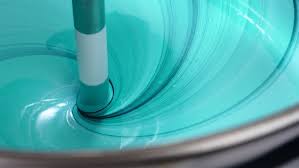
The Role of Coatings in Protecting and Enhancing Surfaces
Coatings play a crucial role in preserving, protecting, and enhancing various surfaces across industries. From buildings and infrastructure to automobiles and electronic devices, coatings serve as a barrier against corrosion, wear and tear, UV exposure, and chemical damage.
One of the key functions of coatings is to provide a protective layer that shields surfaces from environmental factors. For example, in the construction industry, coatings help extend the lifespan of buildings by preventing water infiltration and resisting mold growth. In automotive applications, coatings not only enhance the aesthetic appeal of vehicles but also protect them from rust and scratches.
Besides protection, coatings also contribute to the visual appeal of products and surfaces. The choice of coating can significantly impact the appearance, texture, and finish of an object. Whether it’s a glossy finish on furniture or a matte coating on electronic gadgets, coatings play a vital role in defining the overall aesthetics.
Furthermore, advancements in coating technologies have led to the development of specialized coatings with additional functionalities. Anti-graffiti coatings make it easier to remove unwanted markings from surfaces, while self-cleaning coatings repel dirt and dust particles, reducing maintenance efforts.
In conclusion, coatings are indispensable in modern industries for their dual role in protection and enhancement. As technology continues to evolve, we can expect further innovations in coating formulations that offer superior performance while meeting sustainability requirements.
Essential FAQs About Coatings: Types, Protection, Selection, Sustainability, Aesthetics, and Maintenance
- What are the different types of coatings available?
- How do coatings protect surfaces from corrosion and wear?
- What factors should be considered when choosing a coating for a specific application?
- Are there eco-friendly or sustainable coating options available?
- How can coatings enhance the aesthetic appeal of products or surfaces?
- What maintenance procedures are recommended for coated surfaces to ensure longevity?
What are the different types of coatings available?
There are various types of coatings available to cater to different surface protection and enhancement needs. Common categories of coatings include acrylic, epoxy, polyurethane, and powder coatings. Acrylic coatings are known for their durability and weather resistance, making them suitable for outdoor applications. Epoxy coatings provide excellent adhesion and chemical resistance, often used in industrial settings. Polyurethane coatings offer versatility and UV resistance, making them ideal for automotive and marine applications. Powder coatings provide a durable finish with minimal environmental impact, commonly used in metal finishing. Each type of coating has its unique properties and applications, allowing users to choose the best option based on their specific requirements.
How do coatings protect surfaces from corrosion and wear?
Coatings protect surfaces from corrosion and wear by forming a durable barrier that shields the underlying material from environmental factors. Corrosion occurs when metal surfaces are exposed to moisture, oxygen, and other corrosive agents, leading to degradation and rust formation. Coatings act as a protective layer that prevents direct contact between the metal substrate and corrosive elements, thereby inhibiting the oxidation process. Similarly, coatings help reduce wear by providing a sacrificial layer that absorbs friction and abrasion, preserving the integrity of the surface underneath. By choosing the right type of coating with suitable properties such as adhesion, hardness, and chemical resistance, surfaces can be effectively safeguarded against corrosion and wear for extended durability.
What factors should be considered when choosing a coating for a specific application?
When choosing a coating for a specific application, several key factors should be considered to ensure optimal performance and longevity. Firstly, the environmental conditions to which the surface will be exposed play a critical role in determining the type of coating required. Factors such as temperature fluctuations, UV exposure, moisture levels, and chemical exposure must be taken into account. Additionally, the substrate material and its preparation are essential considerations as they can impact adhesion and durability. The desired aesthetic finish, application method, maintenance requirements, and regulatory compliance are also important factors that influence the selection of the most suitable coating for a particular application.
Are there eco-friendly or sustainable coating options available?
Yes, there are eco-friendly and sustainable coating options available in the market today. With a growing emphasis on environmental conservation and sustainability, manufacturers have been developing coatings that minimize environmental impact while maintaining performance standards. These eco-friendly coatings are often formulated using renewable resources, low-VOC (volatile organic compound) or solvent-free ingredients, and non-toxic additives. By choosing sustainable coating options, businesses and consumers can reduce their carbon footprint and contribute to a greener future.
How can coatings enhance the aesthetic appeal of products or surfaces?
Coatings play a significant role in enhancing the aesthetic appeal of products or surfaces by providing a visually pleasing finish that can transform the overall look and feel. The choice of coating, whether it’s a glossy, matte, textured, or metallic finish, can greatly influence the appearance of an object. Coatings can add depth, richness, and vibrancy to colors, making them more attractive and eye-catching. Additionally, coatings can help conceal imperfections on surfaces, creating a smooth and flawless finish that enhances the perceived quality of the product. By offering a wide range of options for customization and personalization, coatings allow manufacturers and designers to create unique and visually appealing products that stand out in the market.
What maintenance procedures are recommended for coated surfaces to ensure longevity?
To ensure the longevity of coated surfaces, it is essential to follow recommended maintenance procedures. Regular cleaning using mild detergents and soft cloths can help remove dirt and debris that may degrade the coating over time. Avoid abrasive cleaners or tools that can scratch the coating and compromise its protective properties. Inspecting the coated surfaces periodically for any signs of damage or wear is also crucial, as addressing issues promptly can prevent further deterioration. Additionally, applying a fresh coat of compatible sealant or protective layer as per manufacturer recommendations can help maintain the integrity of the coating and extend its lifespan.
